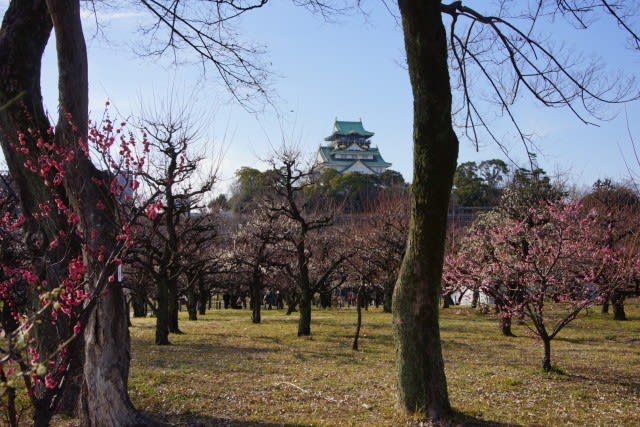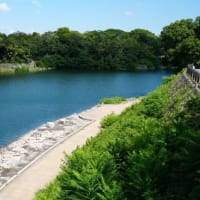The following is the result of checking MSN search results in the search console.
URL is registered with Google
Indexed but not submitted to the sitemap
Sitemap N/A
Referenced page https://blog.goo.ne.jp/sunsetrubdown21_2010/e/25e0a3c42db1ea12f38f8545fcde1927
This page is a chapter from August 07, 2011, titled "Tunaology: Why they Will Swim All Their Life and How Their Body Works to Make It Possible" by Izumi Nakamura and has nothing to do with this chapter.
Criminals, of whom the reader is aware, have been persistently repeating such criminal acts and continue to commit search-and-rescue sabotage against the "turntable of civilization."
At one point, I regularly visited the To-Ji temple in Kyoto to take pictures. At that time, as readers know, I, who call myself Kukai living in the present and Nobunaga living in the present, came across the following words of Kukai and agreed with them deeply.
It was a time when I remembered that I wanted to stop sending out information because I was fed up with the Internet, where the evil of "abysmal evil" and "plausible lies" as described above was active.
Kukai said, "It cannot eliminate evil from this world. Then, what should we do? Do we cry ourselves to sleep? No, we do not. We must practice good deeds. We must do good deeds so that even between our fingers, evil cannot enter.
It is Kukai, I thought so, and as you know, I have been telling the world the truth day after day.
However, a good friend who had been helping me for a long time became ill with an eye disease. It is the biggest crisis on the turntable of civilization.
I will change paragraphs, etc., and re-transmit.
They have always been tolerant socialists. Not so different from the Communists. The word communism would be physiologically repulsive to the American public. So, they fudge it with "liberal" and other terms, titled.
I sent out this chapter on 07/14/2019.
I just found the following article online.
Several passages factually support Masayuki Takayama's latest book that I am now introducing to Japan and the world.
In some places, it testifies precisely what I have been saying: the Asahi Shimbun employees are just honor students for entrance exams, not the best people in Japan.
The following is a dialogue between two former Asahi Shimbun employees born in 1934 and held important positions at Asahi Shimbun, so they are well versed in the company's postwar history.
"In-depth Discussion: Former Employees Discuss Why Asahi's Biased Reporting Has Not Ceased
Monthly "Sound Argument" November 2008 issue
Takeshi Inagaki (former deputy editor of Asahi Shukan) / Minori Hongo (former head of the Asahi Shimbun's training center) / Interviewer Mizuho Ishikawa (former editorial writer of Sankei Shimbun)
Asahi was a mirror of postwar leftist society
Inagaki
I always say that the Asahi Shimbun is self-appointed as the guardian deity of postwar democracy.
How and where did the distortions bring about by that postwar democracy come from?
I think it is fair to say that this is precisely reflected in the tone of the Asahi Shimbun.
It is often said that the mass media is a mirror of society.
However, the Asahi Shimbun also mirrors Japan's so-called left-wing society because postwar democracy has been controlled and distorted by the left.
It can say that the left and Asahi influence each other.
So what is it about the left that resonates with each other?
It is pro-communist but not necessarily communist.
It does not have a firmly constructed theory like the Communist Party.
Instead, it is based on a mood, and you could say that it is a mode that thinks it is more remarkable that way.
In other words, there is a kind of leftist sentiment.
Hongo.
Immediately after the end of the war, Asahi first clearly expressed its leftist colors.
In October 1945, the Asahi company called it the October Revolution, but in short, Mr. Kikunami Katsumi (later the Central Committee member of the Japanese Communist Party), who had been hiding underground until then, and later, "I was a Marxist." Mr. Kyozo Mori (later the chief editor) confessed in his book, and others came out with a natural face and supported the theoretical armament.
Inagaki
So is Seiki Watanabe (later president).
Hongo
He quit after the Yokohama incident, I believe.
Inagaki
No, he left the company but returned after the war.
Hongo
Mr. Shinjiro Tanaka will also be reinstated.
He is the man who later founded the "Asahi Journal" as head of the Publications Bureau.
Inagaki
He sat on the Sorge case, didn't he?
Hongo
Yes. He was the head of the Political Economy Department at the Sorge case.
Strangely enough, he was not indicted in the Sorge case, but he was from the Osaka Economic Affairs Department.
Mr. Tanaka was from the Osaka Economic Affairs Department, and Mr. Tomoo Hirooka and Mr. Kyozo Mori. The Osaka editorial bureau was far from Tokyo, the center of power, and had a somewhat anti-establishment atmosphere even before the war.
In 1936, when a scandal involving an Asahi journalist occurred at the then Tokyo Stock Exchange and the Tokyo Economic Affairs Department had to be reformed, Mr. Tanaka moved to Tokyo with Mr. Hirooka and others from Osaka.
Hidemi Ozaki was also at the Tokyo head office at that time.
Tanaka, who had obtained information from his subordinates, was the one who told Ozaki about the top-secret "southward expansion of the "Gozen-kai" (Imperial Conference).
Such people were hidden within the company during the war and came out all at once at the end of the war.
The GHQ order banning them from public office was issued in 1946. Still, the year before that, Asahi independently removed the then editorial executives and the heads of the Murayama and Ueno families. In the spring of 1946, the executives were publicly elected.
It meant that the union would elect them.
Tadashi Hasebe, who was still deputy editorial bureau chief, was appointed president, but it became a kind of union-management.
I think this was the first time a red flag was raised at Asahi.
But the critical thing to remember is that the undercurrent of this trend existed even before the war.
And the GHQ, which promoted the occupation policy, also had an innovative faction, and it was in response to this Asahi's left-leaning line began.
Inagaki
It seems that many innovators were in the civil affairs bureaus and social education fields at that time.
Hongo
Yes. Some of them promoted New Deal policies.
Inagaki.
Even the New Dealers are New Deal leftists.
Hongo.
You could say they are the ones whose dreams did not come true in America.
Inagaki.
They have always been tolerant socialists.
Not so different from the Communists.
The word communism must be physiologically repulsive to the American people.
So, they were deceptively called "liberals" and infiltrated various government agencies, and some of the most radical among them were brought into Japan.
Some of the most radical people came to Japan. They infiltrated the social education field of MacArthur's headquarters.
Hongo
So these people planned to use newspapers to democratize Japan.
They brought those who had been oppressed during the war to the surface and used the newspapers as a precursor to promote the so-called democratization of Japan.
The Yomiuri had a fierce dispute with the Yomiuri.
It was led by Tomin Suzuki, a correspondent of Asahi in Europe during the war.
The world situation, however, was changing dramatically.
As early as March 1946, Churchill gave his "Iron Curtain Speech," The Chinese Communists were increasingly defeating Chiang Kai-shek.
Furthermore, the Korean War began to unfold.
IT was when the U.S. changed its occupation policy.
The United States, which had previously ostracized prewar and wartime leaders by banning them from public office, made a complete turnaround and embarked on the Red Purge.
After education, the next target was the newspaper industry.
NHK had the most significant number of expellees with 119, followed by Asahi with 104.
The method used was to promote snitching within the workplace.
President Hasebe was bitter and even forced by GHQ to do it, or the Asahi Shimbun would be destroyed.
It is said that the person he worked hardest to protect was Shintaro Kasa, the chief editorial writer.
Those who once appeared in the public eye and became prominent with the labor union as their mother organization, such as Mr. Hirooka, Mr. Tanaka, and Mr. Mori, were returned to their original workplaces at this point.
Then, the ban on holding public office was lifted, and both Seiichi Ueno and Nagataka Murayama returned to the company.
However, both men were second-generation members of the company's family, and their "good intentions" were undeniable.
Inagaki
You didn't have the leadership of Mr. Shoriki (Matsutaro Matsutaro, President of Yomiuri and Director General of the Science and Technology Agency in the first Kishi reshuffled cabinet).
Hongo
Initially, Mr. Nagataka was the third son of a feudal lord who had received a viscountcy. Mr. Seiichi is also so meek that he is said to have "the DNA of a fugitive from the enemy" (laugh).
In the end, the relatively young people who survived the war and had managerial skills built the postwar newspaper boom that began in 1948 and 1949.
The business side was led by a bigwig named Daizo Nagai (later executive director). The editorial side was led by Hanichiro Nobuo (later managing director), who built the postwar golden era until the early 1950s.
Ishikawa
That was the era of Mr. Murayama.
This article continues.




















